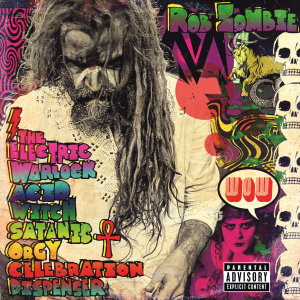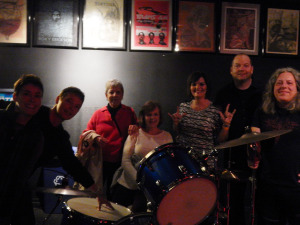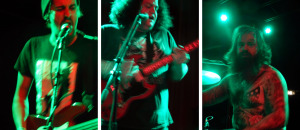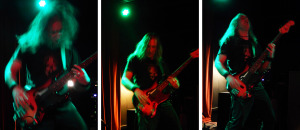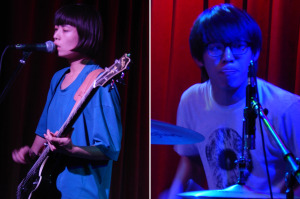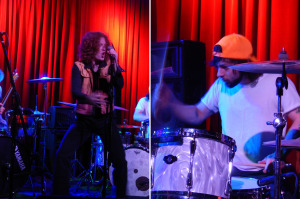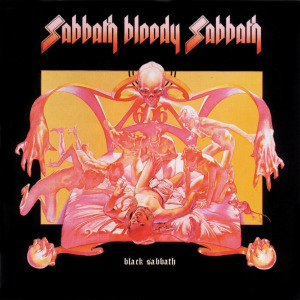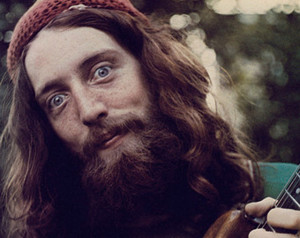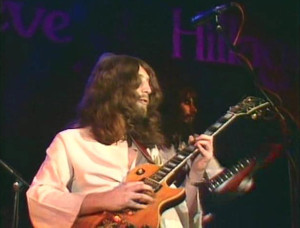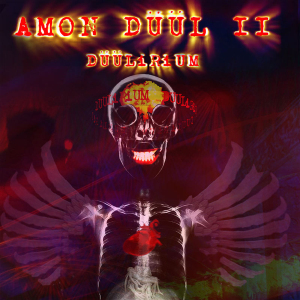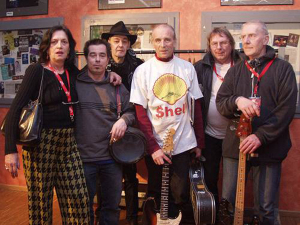(SELF-RELEASED; 2019) A REVIEW FROM THE VAULT

John William Lowery, better known as John 5, currently plays guitar for both Marilyn Manson and Rob Zombie and even logged time with David Lee Roth in the late ‘90s. His solo spans some fifteen years and nine studio albums, beginning with VERTIGO in 2004. His latest release with his band, the Creatures, INVASION is the topic of this review.

The album’s title track opens with some percussion and the eerie sound of wind whistling through the darkness; the creepy vibe almost reminds me of a Rob Zombie project, with its dark, percussion-fueled sound. A filtered guitar with a phaser slides over the top, playing a simple melody ‘til the end. All in all, the tune sets a good tone for the album. “I am John 5” starts with a robotic voice repeating “I am John 5” over and over again before the blistering lead kicks, something we’ve all come to expect from John 5. The tune shifts to the chorus, then into another solo section, even faster than the first and up an octave. The song breaks into a really groovy clean section with a funk feel and back into another phenomenal solo, extremely clean and distorted. This song is incredible! John does instrumental songs and albums as good as, if not better than some of the accepted greats (Satriani, Vai, Gilbert, Malmsteen). A badass riff kicks off “Midnight Mass.” The drumming on this one is also not to be overlooked… Logan Miles Nix is a monster on the kit. The song is an incredibly good metal track, even looking past the soloing (which, as always, is brilliant and super technical); it sounds like a cross between groove and extreme metal. The second half of the tune has the best riff and best soloing, as John breaks up the shred style for a minute, adopting a blistering Blues style that’s definitely killer. “Zoinks,” the only song I’d heard from the album before I sat to listen to the whole thing, is my favorite John 5 song to date and is VERY close to my favorite instrumental guitar piece of all time. It has everything you could possibly want: It begins with an amazing, slapping bass riff from Ian Ross that has enough pop and funk to make Flea jealous before moving into a section that sees John incorporating shred and sweeps and tapping into the overall melody; repetition of this part throughout the song is what won me over. About two and a half minutes in, the number breaks as the slapping part comes back heavy before John tears into a high speed solo with a really cool ascending and descending lick and a ridiculous sweep at the end before heading back to the original melody shortly before the end of the track. “Howdy” explores John’s “chicken pickin’” abilities. For those that are unfamiliar, chicken pickin’ incorporates your middle finger, ring finger and pinky finger, as well as a pick in your strumming hand to play extremely complex (usually Country or banjo-style) licks on the guitar. It’s extremely difficult and there are only a couple guitarists within the world of metal music who can do it well. As an avid banjo player, John 5 is one of the few. Along with the chicken pickin’, John adds some “traditional” Country licks over the two-step Country beat, very reminiscent of Les Paul and Chet Atkins. The tune also features a harmonic section in the middle that is really cool. About two minutes in, we’re hit with a VERY Les Paul-inspired section of licks that is beyond cool. After, the beat speeds up extremely fast and John breaks out an actual banjo! What a cool song!

The album’s second half kicks off with “Crank It”/“Living With Ghosts,” which has a very strange sound indeed, sort of metal mixed with EDM at the start; when the melody/solo comes in, it’s just an absolute showcase of 5’s abilities. He does such a good job bringing the solo to you in a way that doesn’t feel excessive. It is incredible! The middle section between the two tunes slows things down with a clean section leading into a heavy, dirty rhythm guitar as John goes into a slow melodic solo with a wicked two guitar harmony section. There’s more insanity as the soloing heats up. The song ends after one more round of the dark, slower part. “Cactus Flower” opens with a quote from the Stephen King movie CARRIE and goes into a very different direction than anything we have heard so far on this album: The guitar sound is cleaner, the pace slower. It’s a great song for allowing yourself to drift away… super moody and great at evoking emotions, making you feel what John was trying to convey. The opening salvo of “I Want It All,” an arpeggio sweeping lick into a very intricate sliding lick, just shows how absurdly talented and amazing John 5 really is. The song dropped my jaw a couple times; as a guitar player, I’m in shock… it definitely showcases John’s abilities. Nestled toward the end of an album of killer music, “I Want It All” is a must listen. John throws a talk box in throughout the song, intoning the track’s title whenever there’s a break from the soloing. The main riff is full of everything you could want: Emotion, shred, distortion, unbridled technical prowess… just a killer track, an absolute GEM for any guitar player or fan of guitar instrumentals. To this reviewer’s ears, “I Like the Funk” almost sounds Tom Morello-inspired, FULL of that man’s emotion and undeniable groove. It’s got plenty of wah, pop and slapping, with some moments of absolute killer shred and insane bends that just make you… move. There’s a really awesome section at about 2:50 in, a call and response with a sample of a female singer (Lisa Forman) saying/chanting “I like the funk” and 5 just RIPPING licks afterwords. As a point of interest, Cinderella’s Fred Coury plays drums on the cut. The last song on the album is “Constant Sorrow,” a cover of the folk classic “I Am a Man of Constant Sorrow,” written by Dick Burnett in 1913 and first recorded by Emry Arthur in 1928; it’s the song that George Clooney’s character sings in O BROTHER, WHERE ART THOU?. Side note: My favorite version comes from a 2002 live Alison Krauss and Union Station. If you’ve never heard of Union Station, PLEASE PLEASE go check them out; they play Bluegrass and Country and are incredibly talented and woefully underrated. The song’s appearance here is John 5 paying tribute to the tune’s message and staying power. As always, John’s version is full of technical wizardry and skillful playing. I don’t know what more I can say about it; it is a solid instrumental cover and a really cool way to close out this album.

If you have the time, sit yourself down and give the whole thing a listen. There is not a bad song on this album. I loved it! Every second is something worth hearing. If there is a complaint, it would be this: I would have liked to hear him slow things down just a bit more; I feel like those slower moments are the ones that make it original, setting it apart from other people. All in all, though, a solid 9 out of 10 and one of my favorite guitar albums ever. If you ever had any doubts about John 5’s talents, this record goes a long way in showing that he really is an incredible musician, one of the best guitarists on planet earth. He’s made great progress with these solo albums, with his playing maturing and changing, while still maintaining his original style. So, what are you waiting for? Check it out!




